Open-concept living rooms are all the rage these days. Why wouldn’t they be? They create a sense of freedom and spaciousness that traditional closed-off rooms just can’t match. But styling them? That can be a bit tricky! How do you create a cohesive, inviting atmosphere in a space that flows from the living room into dining areas, kitchens, or even hallways? Don’t worry—whether you’ve got a cozy studio apartment or a sprawling modern home, we’ve got you covered. Let’s dive into some tips that’ll help you style your open-plan living room like a pro!
This post contains carefully selected links to products we love. If you choose to purchase through them, we may earn a small commission at no extra cost to you.
1. Define the Zones: Make Each Area Feel Unique
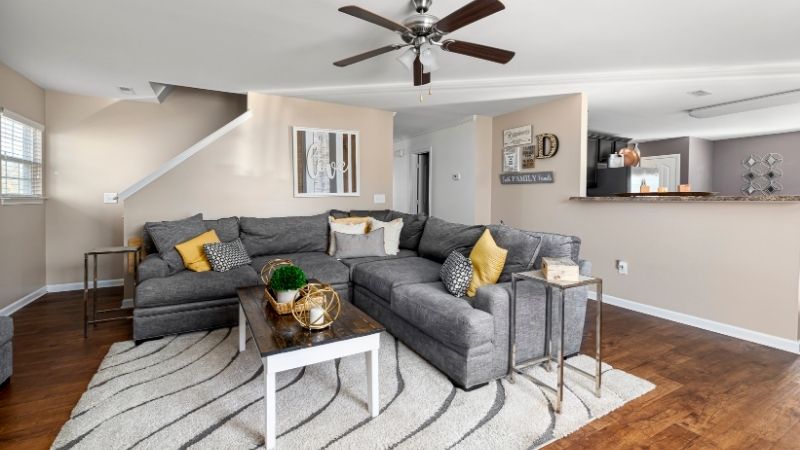
In an open-concept space, it’s essential to define the different zones. Whether you're working with a living area that blends into a dining room or an open kitchen, separating these spaces visually can make a huge difference. You want the flow of the space to feel natural, not chaotic.
Tips to Try:
- Rugs: A large area rug can help anchor your living room while clearly delineating it from other spaces. Choose a rug that reflects your style but still allows for fluidity with adjacent areas. 👉 Check out this plush and durable area rug—perfect for creating a cozy vibe in your open space.
- Furniture Placement: Use the furniture to subtly define the space. A sectional sofa or a pair of chairs can define the living area, while a dining table can help anchor the dining zone. 👉 This stylish sectional sofa is ideal for adding structure and comfort to your open-plan room.
- Lighting: Different types of lighting can also help separate areas. Use pendant lights or chandeliers over dining tables, and softer lighting in the living room to create a welcoming atmosphere. 👉 We love this chic pendant light to add character above your dining area!
Pro Tips:
- Keep pathways clear! Don’t overcrowd the space with furniture. Leave room to move freely between areas.
- Opt for open shelving or low furniture to maintain a sense of spaciousness.
2. Use a Cohesive Color Palette: Bring It All Together
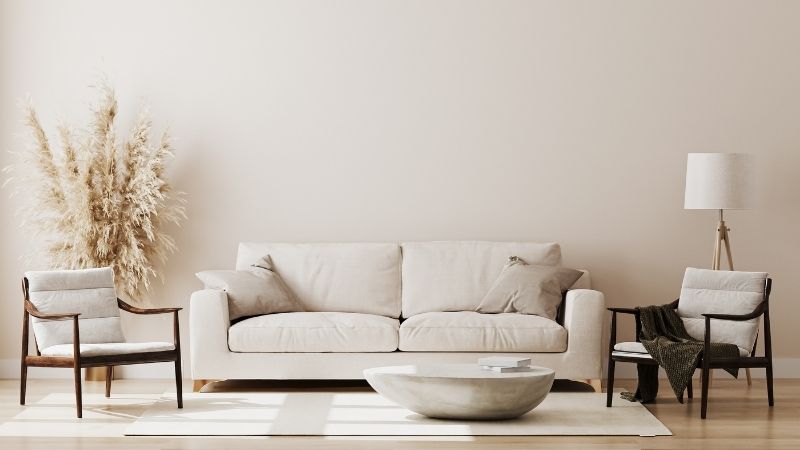
In an open-concept living space, using a cohesive color palette is essential to making the whole room feel unified. While you want each zone to have its own identity, using complementary colors throughout will create a fluid transition from one area to the next.
Color Palette Ideas:
- Neutral Tones: If you’re unsure where to start, go for neutral colors as your base. Light grays, whites, or beiges are great for creating a calm and unified space. 👉 This neutral beige sofa will keep the living area feeling light and fresh while blending seamlessly with adjacent rooms.
- Accents: Use accent colors in pillows, throw blankets, and artwork. These touches of color help inject personality into each area without overwhelming the space. 👉Add a pop of color with these trendy throw pillows—they’ll tie your open-concept room together beautifully.
Pro Tips:
- Stick to two or three main colors throughout the space, and experiment with different shades of those colors for depth.
- Don’t forget about textures! Different textures, like a velvet pillow or a woven throw, can bring dimension to a neutral space.
3. Furniture Style: Keep It Consistent and Comfortable
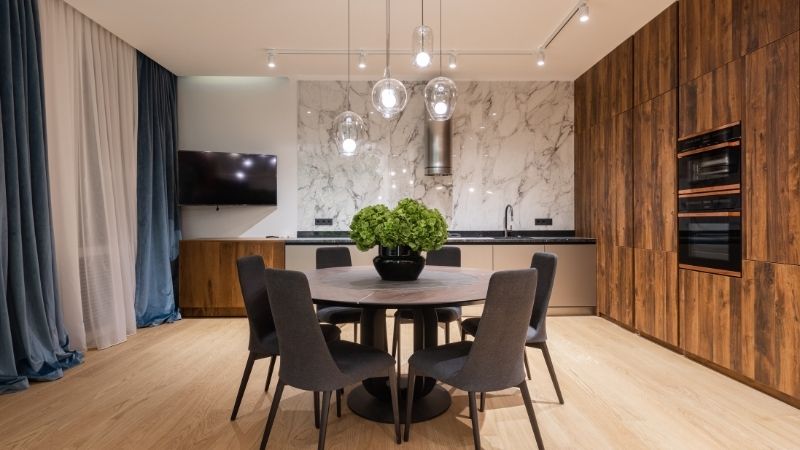
One of the challenges of open-concept living rooms is maintaining a consistent style across the entire area. From the living room to the dining area and kitchen, the furniture should feel like it belongs together, but still, each area should have its own vibe.
How to Achieve the Perfect Balance:
- Match but Don’t Match Too Much: You don’t have to use the exact same furniture in every zone. But keeping the style consistent helps create a cohesive look. If your living room has mid-century modern furniture, carry that style through to the dining area with a sleek table and chairs. 👉 Check out this mid-century modern dining table to complement your open living space.
- Keep Scale in Mind: The scale of your furniture is crucial. Too big of a sofa or a bulky dining table can overwhelm the space, making it feel cramped. Choose furniture that’s proportional to the room size. 👉 This stylish, compact coffee table is perfect for smaller open-concept spaces.
Pro Tips:
- Opt for furniture that’s visually light or low-profile to keep the space from feeling heavy or cluttered.
- Add variety by mixing materials like wood, metal, and glass, but keep the style consistent to avoid visual chaos.
4. Accentuate with Art and Accessories

Art and accessories are the finishing touches that turn a blank space into a home. They help personalize the open-plan area while maintaining the cohesive flow you’re after.
Tips for Art & Accessories:
- Art in Common Themes: To tie the spaces together, choose artwork or prints that share a theme, whether it’s the same color scheme or a similar style (e.g., minimalism, bohemian, or abstract). 👉 This minimalist painting would look perfect in any open-concept room and add a sophisticated touch to the space.
- Use Accessories Wisely: Accessories like lamps, vases, and plants can enhance the overall decor. Try to keep them consistent with the overall theme. A few well-placed plants can soften the hard lines of furniture and bring life to the space. 👉 This modern vase adds a chic touch without overwhelming your open living room.
Pro Tips:
- Group smaller accessories together to create a cohesive vignette.
- Use large statement art in one area (e.g., above the sofa) to create a focal point and keep the rest of the room feeling balanced.
5. Make the Most of Natural Light: Brighten Up the Entire Space
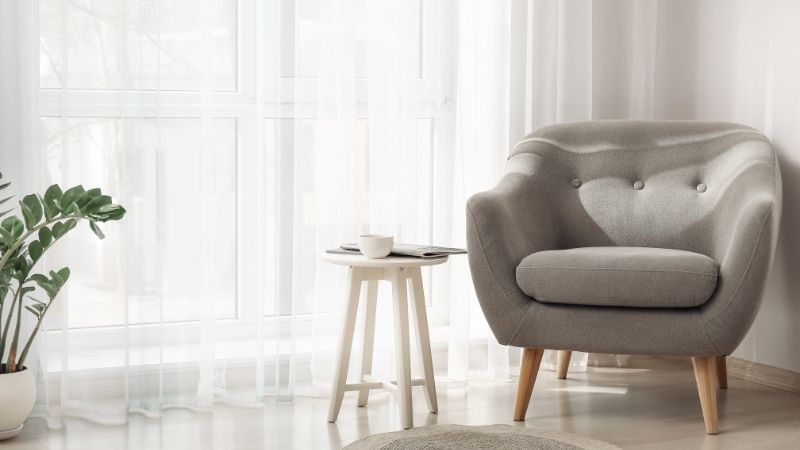
Open-plan spaces are great for letting in natural light, but you still need to be strategic about how you use it. You don’t want your space to feel dark and dreary, so make sure to let the light flow freely throughout the room.
Ideas to Maximize Natural Light:
- Keep Window Treatments Light: Choose light, airy curtains or shades that allow natural light to flood the space while still offering some privacy when needed. 👉 This sheer curtain set will let in all the light you need while adding elegance to your open room.
- Mirrors: Strategically placing mirrors can help bounce light around and make the room feel bigger and brighter. 👉 This large mirror is perfect for reflecting light and creating the illusion of more space in your open-plan living room.
Pro Tips:
- Keep the windows unblocked and avoid heavy furniture that might block the light.
- If you’re working with limited natural light, add artificial lighting in a way that complements natural sources.
6. Add Greenery: Bring the Outdoors In

Nothing breathes life into a room like plants. In an open-plan living space, plants help create visual interest and add a natural, calming vibe that works across all zones.
Plant Ideas:
- Large Statement Plants: In larger open spaces, a large plant (like a fiddle leaf fig) can create a statement and anchor the living room area. 👉 This fiddle leaf fig tree is perfect for adding a touch of nature to your space.
- Hanging Plants: For smaller spaces, hanging plants can add greenery without taking up floor space. They're great for above side tables or near windows.
Pro Tips:
- Mix up your plants’ textures and heights for a dynamic look.
- Choose low-maintenance plants if you're not a green thumb!
7. Personalize with Cozy Textiles
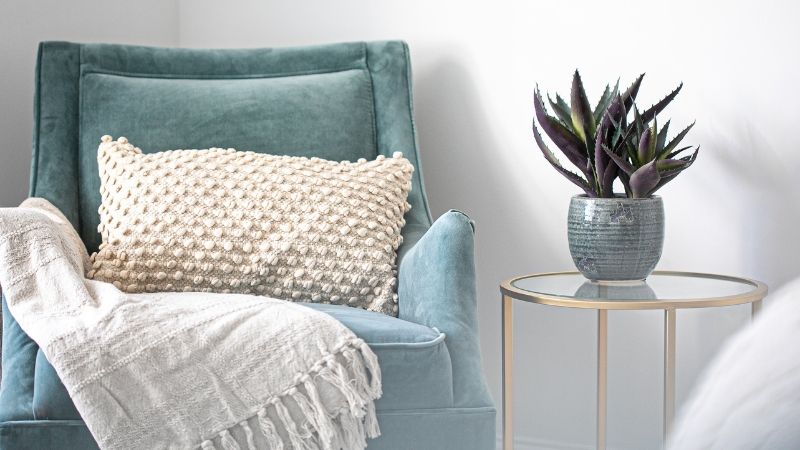
The beauty of an open-concept living room is its ability to feel relaxed and inviting. Adding cozy textiles like throws, cushions, and blankets will help create warmth and comfort.
Textile Tips:
- Throws and Pillows: Pile up some cozy throws on your couch and add a few plush pillows. It’s a great way to bring personality and comfort to the living area. 👉 We love this chunky knit throw—it adds texture and warmth to any open-plan space.
- Curtains: As mentioned earlier, curtains can help soften the boundaries of your open space and make it feel more cozy. 👉 These luxurious velvet curtains add warmth and style, perfect for an open-plan living area.
Pro Tips:
- Use textiles in complementary colors or patterns to create a balanced look.
- Change your throw pillows and blankets seasonally for an updated look without major overhauls.
Wrapping It Up
Styling an open-concept living room is all about balance and creating a cohesive, functional space that flows seamlessly from one area to the next. By following these tips, from defining zones to using a cohesive color palette and adding personal touches, you can transform your open-plan living area into the ultimate stylish sanctuary.
Ready to create your dream open-concept space? For more tips, inspiration, and product recommendations, follow Decormate on Pinterest, and don’t forget to explore our latest blogs for more ideas!